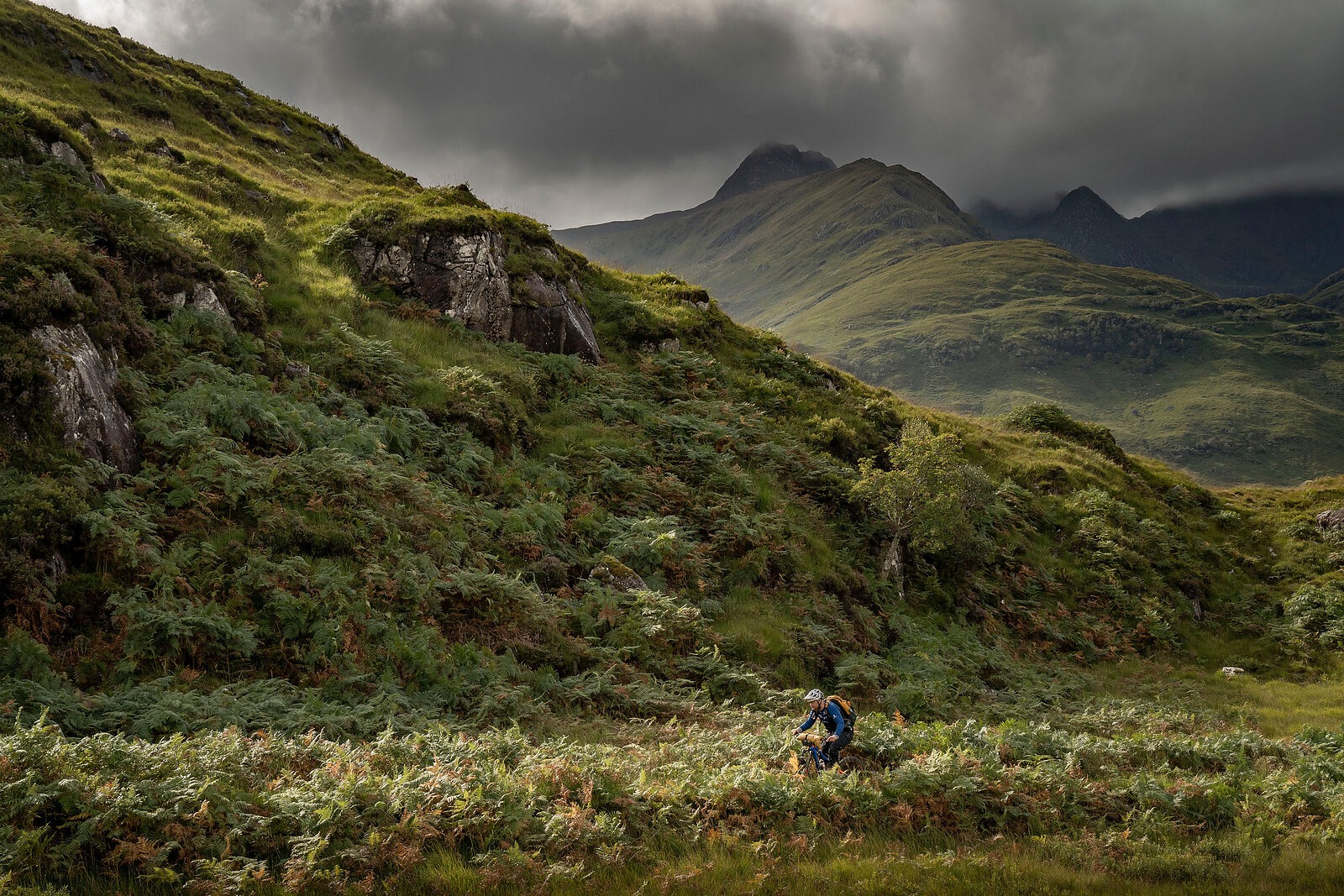
Tempting The Tempest Braving the Elements in Britain's Last Great Wilderness
Words and Photos by Josh McGarel
Dark clouds loomed above us as a howling wind whipped at our cheeks.
The rambunctious North Atlantic weather was coming out to play, and my friend and I looked to be its solitary playmates.
Here we were, in the middle of Northwest Scotland’s remote Knoydart Peninsula, attempting to ride bikes along a primitive footpath that cuts through this harsh and unforgiving landscape. Our plan was to traverse east-to-west across the peninsula’s rugged highlands en route to its rocky western shores, where the Knoydart Brewery beckoned us with its promise of refreshing pints in what is billed as the most remote brewery on the United Kingdom’s mainland. The temptation of riding bikes through empty territory to drink beer brewed from fresh water that trickles down from the surrounding hills proved irresistible.
When we’d begun scheming this adventure—during the doldrums of COVID-19-induced isolation—it seemed like the perfect plan. I was in my adopted home of Squamish, British Columbia, and it had been three years since I’d returned to my native United Kingdom to visit family and friends. With an anticipated lifting of travel restrictions, I began plotting an adventure with my best friend, Dave Frampton, with whom I’d spent countless long weekends exploring southern Scotland by bike over the years. An adventurous reunion with Dave would require two main ingredients—bikes and beer—so we set about identifying the UK mainland’s wildest area to combine the two.
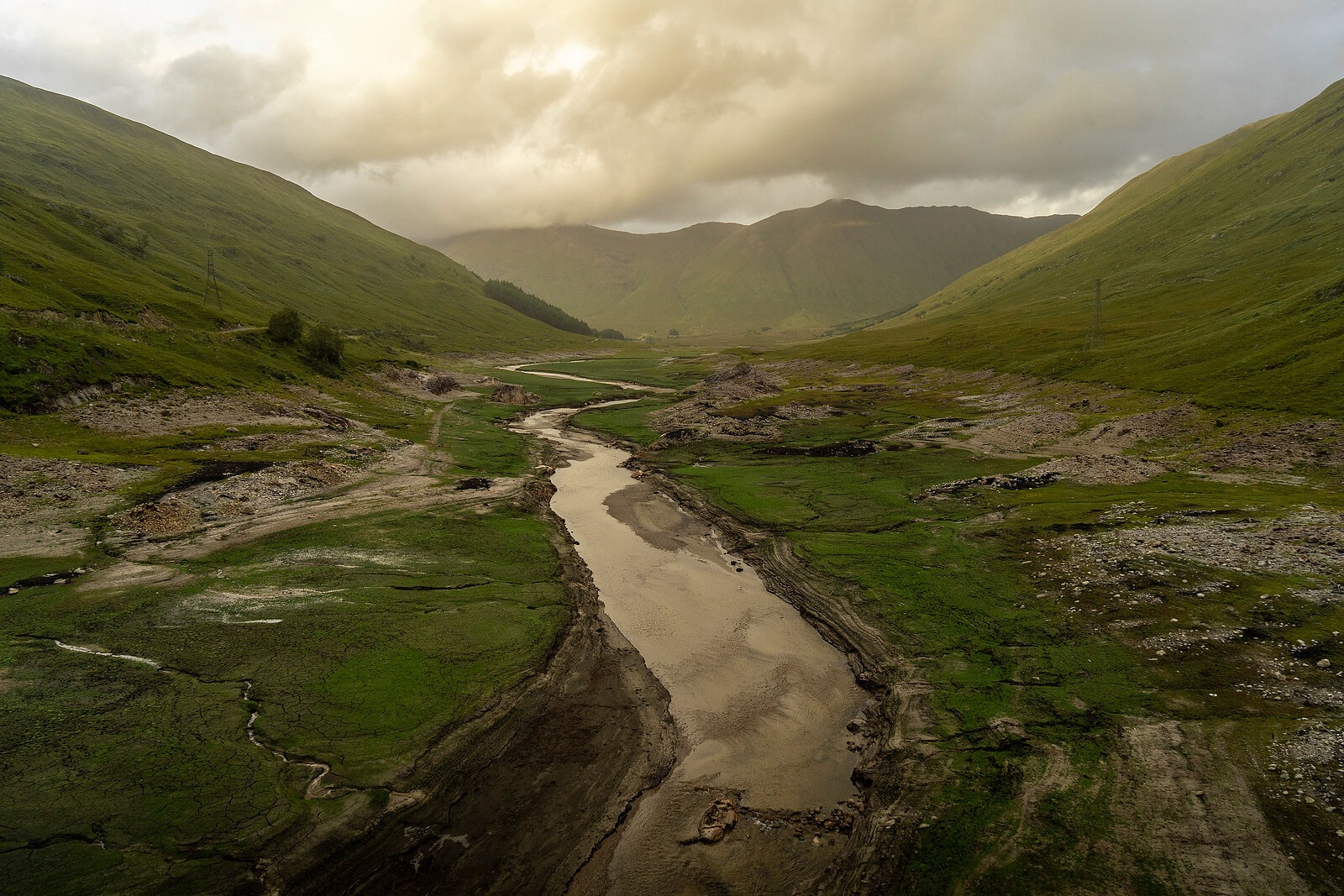
Enter the Knoydart Peninsula, a 200-square-mile expanse of windswept terrain that stretches out into the frigid North Atlantic Ocean. The strong winds and hostile storms that persist on the peninsula have long been a hindrance to historians, as so many artifacts have been destroyed, but it is believed that the first settlers arrived here shortly after the last Ice Age.
Today, however, the peninsula is largely uninhabited, save for a few villages hosting a total population of 120 souls. The Knoydart Brewery, in the village of Inverie, is nestled in a breathtaking coastal valley typically accessed by ferry via the Loch Nevis from the nearby fishing port of Mallaig. The peninsula itself has no official roads, and the only other way to reach Inverie is by the sliver of rudimentary singletrack that cuts across the Knoydart.
Intrepid hikers use this trail to reach Inverie, typically pacing the journey over two days, but we figured that riding, pushing and carrying our bikes for the distance would be a more suitable challenge—and one that would certainly earn the right to sip a few pints in the brewery at the trail’s end. It was a pretty simple plan, but there was precious little information about the trail online, and even after scouring maps and examining the topography much of the route remained a mystery to be uncovered. One thing we knew was that it’d be rough going, with countless obstacles along the way, so we were viewing it as more of an exploration than a simple pedal in the hills. The fact that we couldn’t find any reports of bikes crossing the peninsula made a tough slog all the more likely.
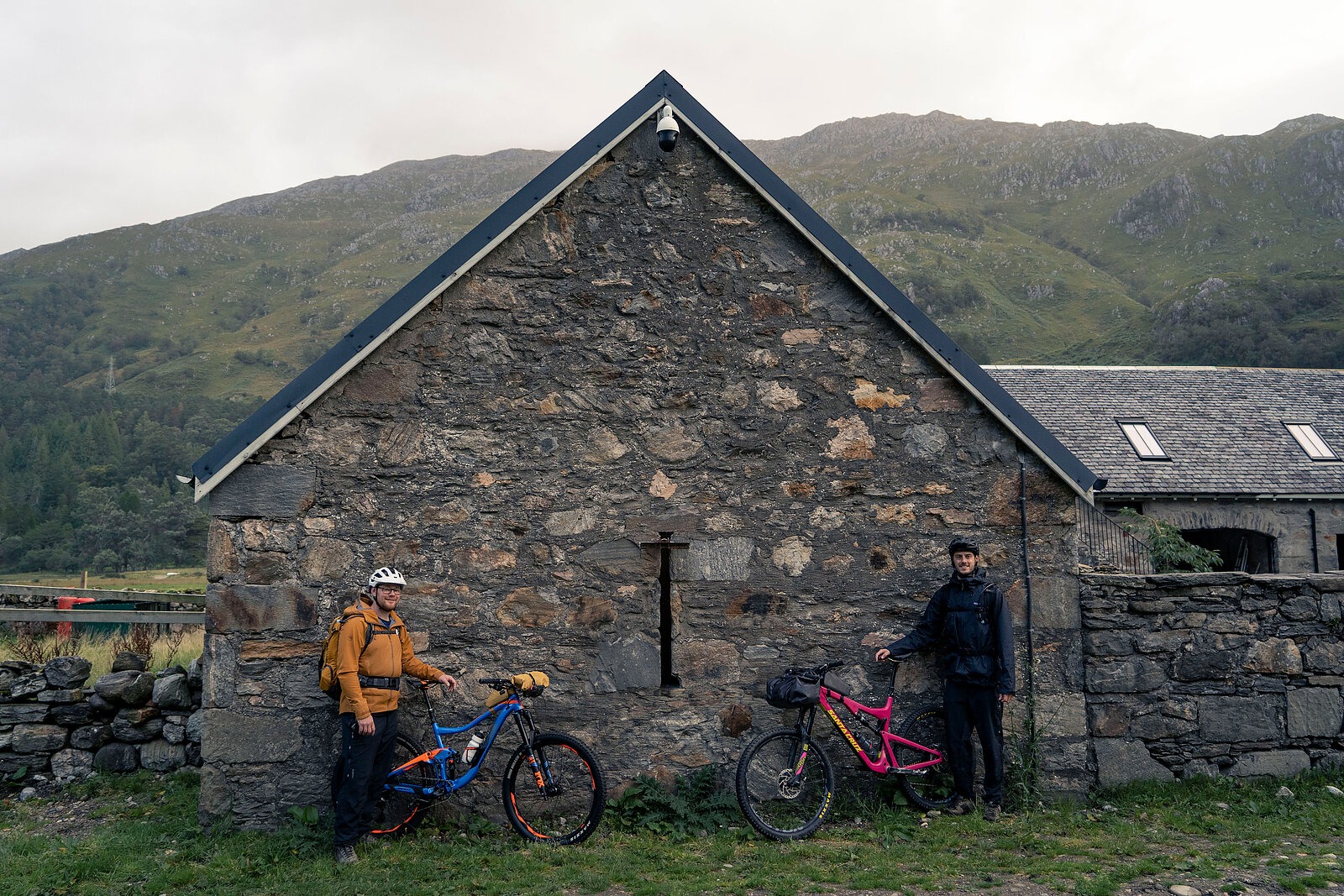

On our drive through the Scottish countryside to our starting point in the hamlet of Kinloch Hourn, heavy drops of rain had already begun pelting our windshield. A check of the radar confirmed that a big storm was rolling in from the North Atlantic and was expected to bring several inches of rain and gale-force winds straight onto the Knoydart. We’d already come this far though, so we decided to try our luck anyway, and after a good night’s rest and a hearty Scottish breakfast at the Lochhournhead Stables B&B, we bid our hosts farewell and started spinning the pedals.
Within the first mile we’d already gotten a taste of what was to come. The narrow trail itself had been carved deep into the earth by roaming deer, occasional hikers and thousands of years of rainfall. The underbrush was thick, covering whole sections of trail and obscuring countless rocks. Our progress was slow and tedious, but occasionally a stretch opened into flat, rocky singletrack, building our confidence that we’d be able to maintain some semblance of speed.
We trudged along, heaving our bikes up the steep, winding track, periodically reaching small plateaus where we could finally jump on the bikes and roll. Once our wheels were spinning, all we could hear was the familiar sound of tires on the ground, and we concentrated on holding traction through slippery sections of damp granite. Each brutal climb was rewarded with short descents—many of which would certainly be classified as “black diamond”—and cleaning these with handlebar bags filled with overnight gear elicited ear-to-ear grins and adrenaline-filled laughter.
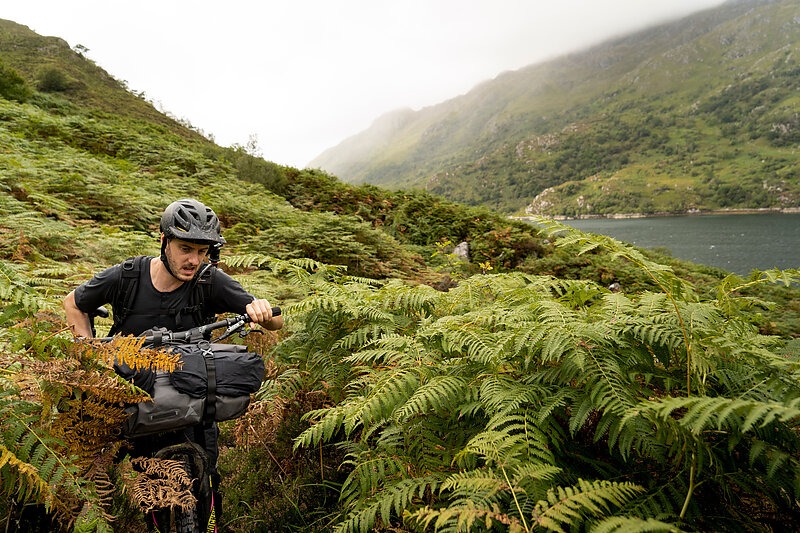
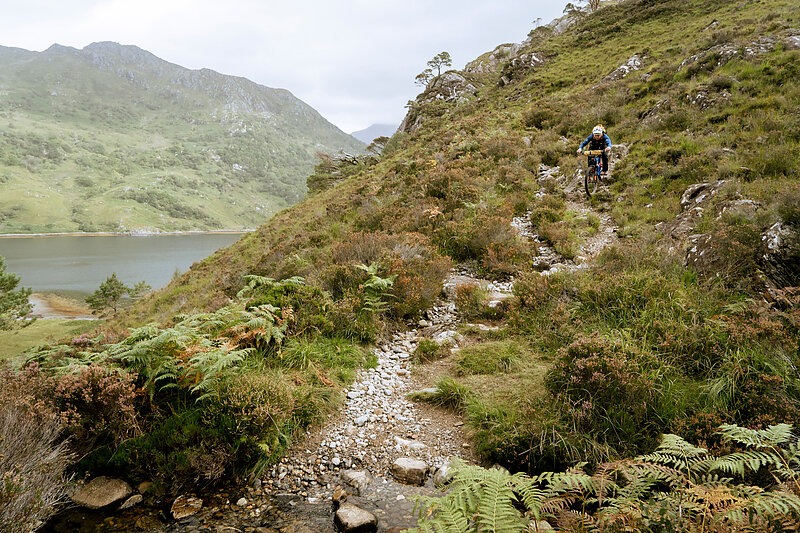
Yet as amazing as these moments were, they were nonetheless fleeting. The maze of tussocks and webs of ferns were seriously impeding our momentum, and frustration began to mount. Almost every pedal stroke was met with undergrowth that snagged our pedals and sent our chests onto the handlebars. In many spots, the foliage was too dense to even carry our bikes, and we were forced to slowly wheel them through the thickets upright on the rear wheels. Most of the trail was completely unrideable, and we began to wonder if we could cover the distance in one day.
Still, we pressed on, determined to reach the small settlement of Barrisdale, which would roughly be the halfway point and our last bastion of civilization before climbing over the mountain pass near Ladhar Bheinn—the region’s tallest mountain and the crux point of the journey. If we could grind our way over the pass, there was a chance we’d be able to descend all the way to the brewery by nightfall.
Much to our dismay, the trail conditions worsened, and the wind began to pick up speed, signaling the tempest that was blowing in from the ocean to the west. Our conversation was reduced to a minimum as we lowered our heads into the wind and pushed through the flatlands toward the mountain in the distance. Eventually we crested a hill and were rewarded with a sweeping view down to the tiny hamlet of Barrisdale. From here, the trail was perched on centuries-old stone walls left behind by previous inhabitants, and we were delighted to descend through a high-speed stretch of technical singletrack. We blasted down the trail, our spirits briefly lifted, and for a few moments the sun broke through the storm clouds and lit up the landscape around us.
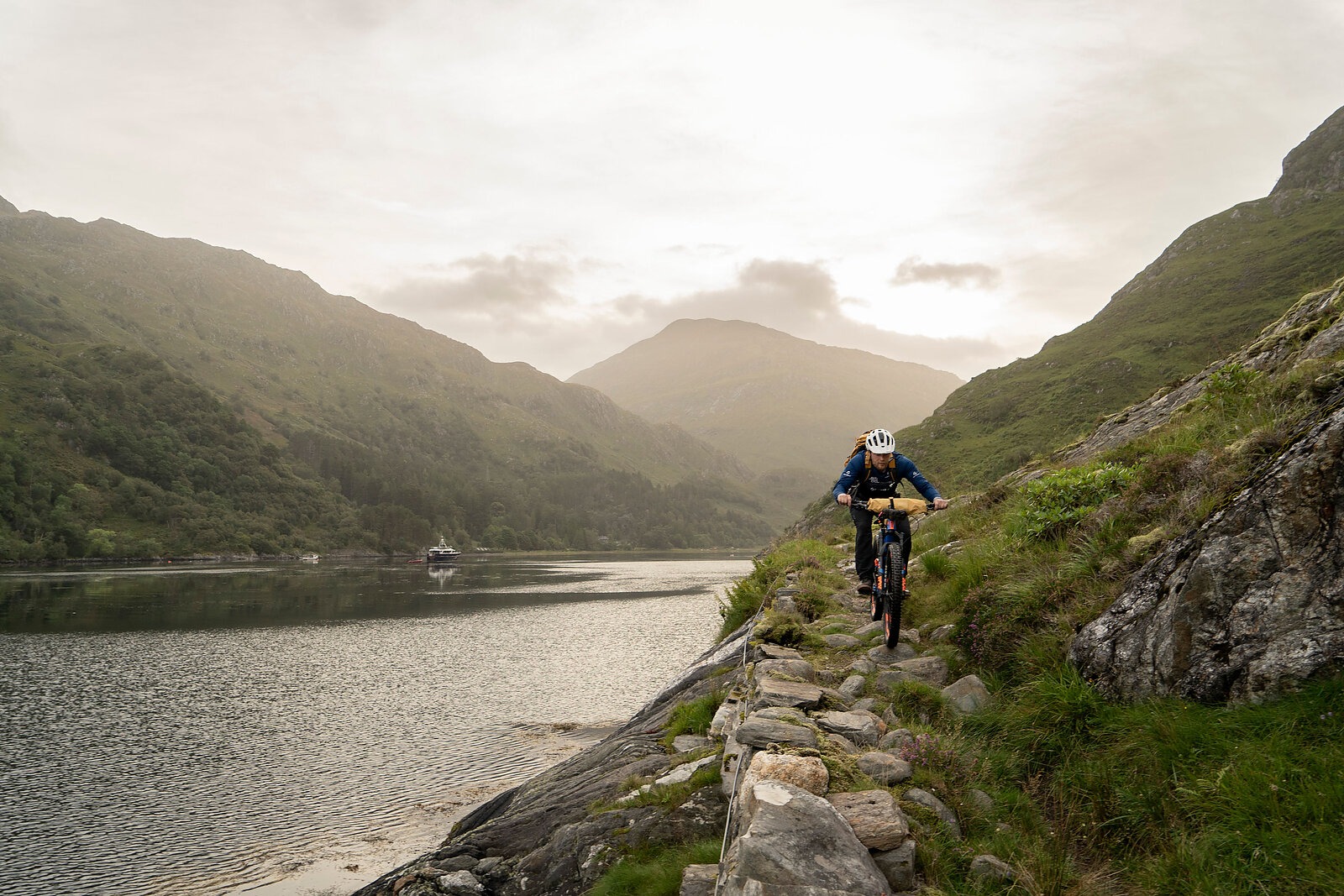
Our pedals spun freely, and we enjoyed the highest speeds we’d reached in several hours despite the rising wind. By the time we coasted into Barrisdale, realizing that it consisted of only two houses, we were staring down the barrel of the impending thunderstorm. We stopped to eat, relishing the brief glimmer of sunlight and soaking up the panoramic views of a huge bay in front of us. On one side, the mouth of Loch Hourn opened up to the mighty North Atlantic; on the other, the towering peak of Ladhar Bheinn loomed large, its rocky point emerging from an undercoat of thick bracken.
It would take hours to wrestle our way through all of that undergrowth, and with the storm rolling in quickly it would be risky to tackle the open pass in a lightning storm. Moreover, there was little chance we could make it to Inverie by nightfall. So, we made the difficult decision to turn back.
As disappointing as it was, the decision itself lightened our spirits and enabled us to fully enjoy the splendor of the moment. We were in the center of an isolated peninsula, surrounded by deserted peaks and a dark ocean in the distance, enjoying our rations underneath the radiant glow of sunlight. For this special half an hour, we could truly live in the present, free from worry about what would surely be a challenging return attempt to outrun the storm.

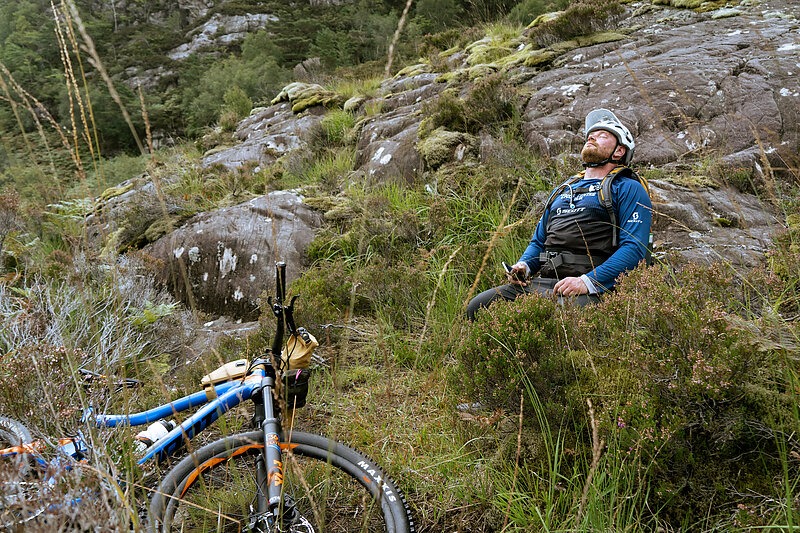
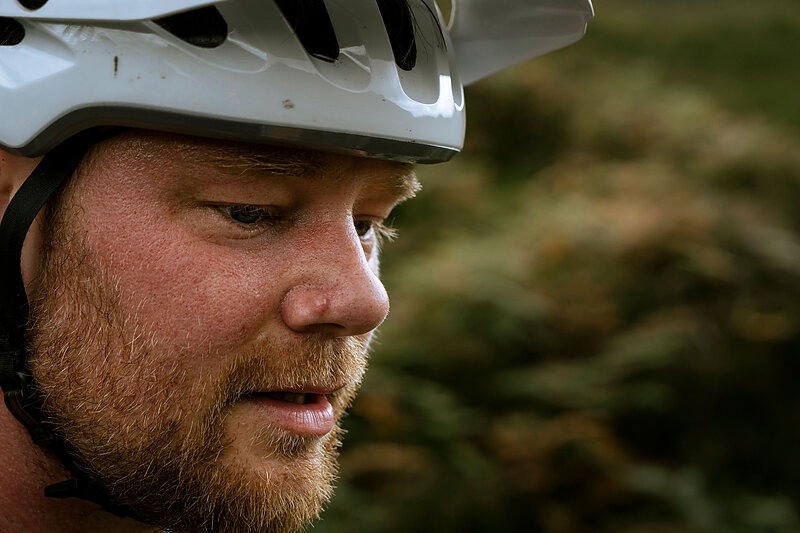
Making it this far through such unforgiving terrain felt like a huge accomplishment, and we reveled in the beauty of where our efforts had taken us. We were in a true wilderness, on a forgotten corner of one of the world’s most populated islands. While the population density of the United Kingdom is 727 people per square mile, here we could gaze for miles in any direction without a soul in sight. It was easy to see why the Knoydart Peninsula is often referred to as the UK’s last remaining wilderness.
Our elation was short-lived, however. With menacing clouds racing over the mountains and the wind whipping up a frenzy, we took one last look at Ladhar Bheinn’s peak and doubled back the way we’d come. The trail was just as horrendous as before, but with a tailwind and the knowledge that we were headed back to safety it seemed much easier. With dark clouds behind us and a patch of clear sky ahead, we were truly headed toward the light at the end of the tunnel.
We plodded on, resigned to the reality that every few pedal strokes would likely end in denial, with shrubs clipping our crankarms or a narrow rut grinding us to an abrupt halt. After more than four hours of trial and error, we finally hit smooth road and pedaled effortlessly back to our car, which was parked near the B&B at Kinloch Hourn. We were back where we’d started the same morning, a long way from the crisp ales of the Knoydart Brewery. But we’d evaded the eye of the storm and still had one hell of an adventure.

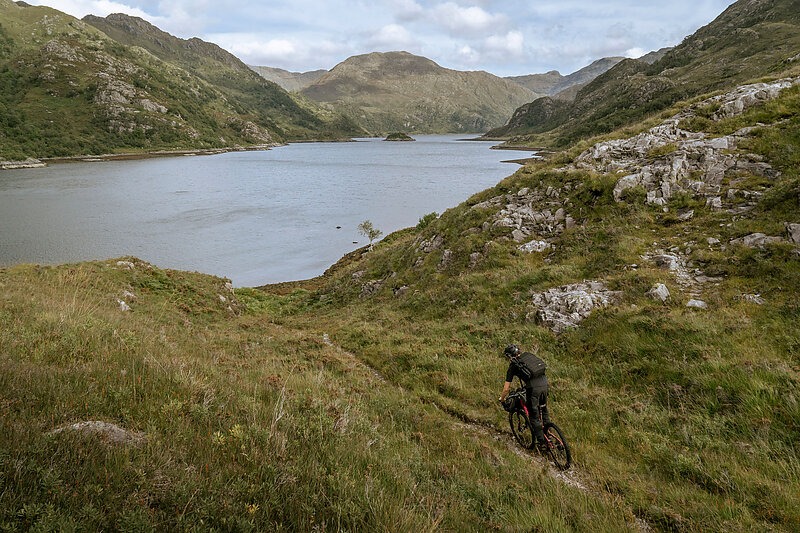

What’s more, we still had a few beers left in the car. We contentedly cracked them and toasted to our hard-fought attempt to cross the peninsula by bike. The warm suds eased the sting of our aborted mission, and as we reflected on the day’s misadventures a certain satisfaction crept into our minds. Though the terrain and storm had stopped us short of our ultimate goal, we had nonetheless achieved another one: to challenge ourselves in a place we’d long dreamed of experiencing together, on bikes, the two-wheeled adventure tools that had forged much of mine and Dave’s longtime friendship.
After years apart, we’d wisely reconnected through challenging the unknown, being humbled by Mother Nature and creating an experience that neither of us will ever forget. In this respect, we’d completely achieved our objective. This experiment was never really about the elusive pints at the end. It was about meeting adversity together along the way. The beer was just an excuse.



